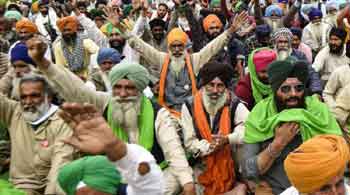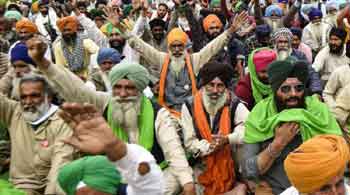” Farmer organizations have ramped up their activism following the Supreme Court’s decision to partially reopen the Shambhu border. Discover the latest developments, farmer leader Jagjit Singh Dallewal’s stance, and what lies ahead for the ongoing protests. “
The Shambhu border, a crucial link between Punjab and Haryana, has been a focal point of significant tension over the past six months. After being closed for an extended period, the Supreme Court recently intervened, mandating a partial reopening of this vital thoroughfare. This judicial decision has re-energized farmer organizations, sparking renewed activism and fueling a fresh wave of political and social discourse.
Farmer leader Jagjit Singh Dallewal has been at the forefront of this resurgence, voicing the frustrations and demands of the farming community. As the Shambhu border opens up, the question arises: what’s next for the farmers? Let’s dive into the intricate details of the ongoing situation, exploring the challenges, responses, and future strategies of the farmers.
Background: The Shambhu Border Closure
The Closure and Its Impact
The Shambhu border’s closure was not just a local inconvenience; it had far-reaching consequences. For six months, this key border crossing was shut, creating a significant bottleneck in the movement of goods and people. The blockade had severe economic repercussions:
- Economic Losses: Traders and transporters faced colossal financial setbacks, with losses running into crores of rupees.
- Public Disruption: The general public struggled with increased travel times and limited access to essential services.
Farmer Organizations’ Stand
For the farming community, the border’s closure was more than just an inconvenience—it was a symbol of broader systemic issues. Farmer organizations, led by figures like Jagjit Singh Dallewal, have been vocal about the necessity of reopening the border. Their demands go beyond mere logistics; they reflect deeper grievances about agricultural policies and governance.
Supreme Court’s Order: A Turning Point
The Court’s Decision
The Supreme Court’s recent decision to partially open the Shambhu border represents a critical juncture in the ongoing farmer protests. The ruling has allowed for the gradual resumption of traffic across the border, but it has also reinvigorated the protests, with farmer organizations seizing the opportunity to advance their demands.
Reaction from Farmer Leaders
Jagjit Singh Dallewal and other leaders have expressed cautious optimism but also renewed resolve. According to Dallewal, the farmers had long been advocating for the border’s reopening. However, the broader context of their protests involves a range of issues that go beyond the immediate logistical concerns.
The Farmer Organizations’ New Strategy
Immediate Responses
With the partial reopening of the border, farmer organizations have intensified their activities. Key strategies include:
- Increased Protests: Farmers are preparing for large-scale protests, potentially involving tractor-trolley marches to Delhi.
- Demand for Implementation: The focus is on ensuring that the demands, which were a significant factor in the border’s closure, are met. Dallewal has emphasized that the protests will continue until these demands are fully addressed.
Future Plans
Farmer leaders are not just reacting to the current situation—they’re planning for the future. Their strategies involve:
- Marches to Delhi: As indicated by Dallewal, if their demands aren’t met, farmers are ready to mobilize to Delhi with their tractors and trolleys, regardless of any concerns about law and order.
- Public Advocacy: The organizations are also focusing on public advocacy to garner support and put pressure on both state and central governments.
The Legal and Political Ramifications
Supreme Court’s Comments
The Supreme Court’s comments on the matter have added another layer of complexity. The Court has made it clear that highways are not meant for parking, yet the farmers argue that they have been left with little choice. This tension highlights the broader issues at play in the ongoing protests.
Judicial Inquiry into Shubhkaran Singh’s Death
Another significant development is the Punjab and Haryana High Court’s order for a judicial inquiry into the death of Shubhkaran Singh, a young farmer who died during the protests. This inquiry aims to address the circumstances surrounding his death and provide some form of justice to his family and the broader farming community.
Addressing the Controversies
Allegations and Counterarguments
One of the key controversies involves allegations that the presence of tractors and trolleys creates law and order issues. Dallewal has countered these claims by pointing out that large numbers of farmers traveled to Delhi without incident in February. He accuses the Haryana government and the Centre of spreading false propaganda to discredit the farmers’ cause.
The Role of Propaganda
The allegations against the Haryana government’s stance raise questions about the role of political propaganda in shaping public perceptions. The farmers believe that misinformation is being used to undermine their legitimate grievances and to distract from the core issues at stake.














